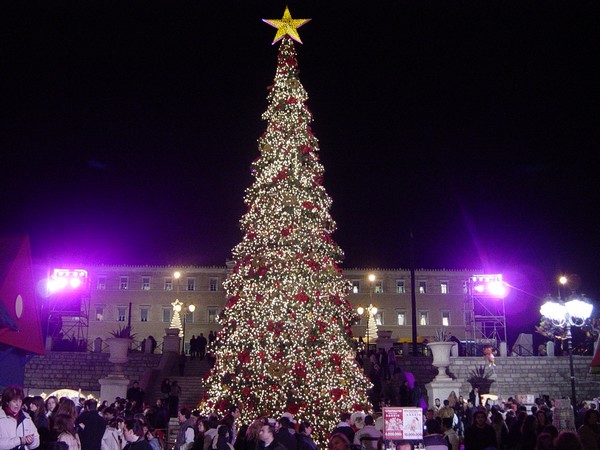The Christmas tree is for most people a focal part of the Christmas celebrations – when the tree is erected in the house the Christmas period has really begun. Although it is now firmly secure in this Christian tradition of Christmas its roots arguably stem from Paganism and other early ancient beliefs and civilisations.
In England, before Christianity, Paganism was the main held belief. In this, a variety of gods were worshipped – largely symbols of nature which were seen to control the country life people led. One such god was the sun whose strength was weakened during winter. Pagans celebrated the winter solstice, usually on 21 or 22 December, the longest night of the year, as the time when the sun would regain its strength and they would start to enjoy longer days. They worshipped the sun with evergreens at this time, as they held the promise of a return to life.
Later, during the 7th century, a monk named Boniface travelled from Devon to Germany to spread the word of the Christian God. Here he supposedly revered the fir tree as being a symbol of the Holy Trinity – God, the Son and the Holy Spirit. The fir tree thus slowly became adopted as a Christian symbol. Around the 12th century Germans started to use the symbol during Christmas time when it was hung upside down from ceilings. Legend has it that Martin Luther first decorated a tree with candles in the early 16th century after being inspired by the stars on his walk home.
The Royal family that came from Germany to the English court in the 1700s brought the Christmas tree tradition with them. However, it was not really taken up by the majority and was typically the preserve of German migrants based in England, though it was sometimes adopted by their English neighbours. This changed however when Queen Victoria, a much more popular monarch, was depicted in an illustration for Illustrated London News in 1846 next to her Christmas tree. The trend then caught on and remained popular until her death, when the general population went in to mourning and lost their verve for the tree. Sometimes simpler ones were still put up in the home.
Charles Dickens could be said to have helped them become popular again when there was a revived interest in all things Dickensian in the 1930s. Decorated trees with baubles and an angel were brought back, with a preference for real trees. During the war period they were scaled back however and so the post-war saw a renewed enjoyment of them. Artificial Christmas trees were available however the preference remained for real ones.
The 1960s saw an influx of imported American artificial trees to England which saw synthetic versions of the Christmas symbol enjoy greater popularity than real trees, for the first time. Christmas trees today are usually a mix of real and artificial, although the preference for real trees probably dominates, as it has done throughout most of its history.
Written by Sam Luther, an experienced blogger and homemaker, passionate about celebrating the festive season

